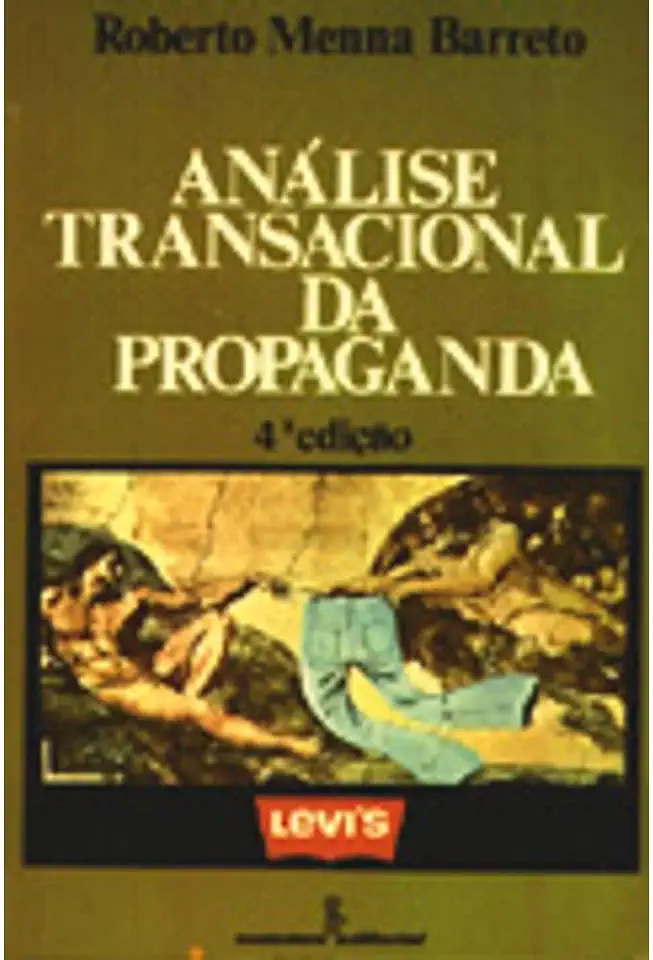
Transactional Analysis in Advertising - Roberto Menna Barreto
Transactional Analysis in Advertising: A Comprehensive Guide to Understanding and Influencing Consumer Behavior
Introduction
In today's competitive advertising landscape, understanding and influencing consumer behavior is crucial for businesses looking to succeed. Transactional Analysis (TA) offers a powerful framework for analyzing and understanding the psychological dynamics that drive consumer behavior, enabling businesses to develop more effective and targeted advertising strategies. This book, "Transactional Analysis in Advertising" by Roberto Menna Barreto, provides a comprehensive guide to the application of TA in advertising, offering valuable insights and practical strategies for businesses to connect with their target audience and drive conversions.
Understanding Transactional Analysis
Transactional Analysis is a theory of human behavior and communication developed by psychiatrist Eric Berne in the 1950s. TA posits that individuals engage in transactions, or interactions, with others based on three ego states: Parent, Adult, and Child. By understanding these ego states and the dynamics between them, businesses can tailor their advertising messages to resonate with consumers on a deeper level.
The Three Ego States
1. Parent Ego State: The Parent ego state represents the internalized values, beliefs, and behaviors learned from parental figures and other authority figures. In advertising, the Parent ego state can be used to establish authority, credibility, and trust with consumers.
2. Adult Ego State: The Adult ego state represents the rational, logical, and objective part of the personality. In advertising, the Adult ego state can be used to provide consumers with factual information, benefits, and reasons to purchase.
3. Child Ego State: The Child ego state represents the emotional, spontaneous, and creative part of the personality. In advertising, the Child ego state can be used to evoke emotions, create a sense of nostalgia, and tap into consumers' desires and fantasies.
Applying TA to Advertising
By understanding the three ego states and the dynamics between them, businesses can develop advertising campaigns that effectively target each ego state and influence consumer behavior. Here are some key strategies for applying TA to advertising:
1. Parent-to-Child: This strategy involves using the Parent ego state to communicate with the Child ego state of consumers. It involves providing guidance, reassurance, and a sense of security. For example, an advertisement for a financial services company might use the Parent ego state to convey a message of stability and reliability.
2. Adult-to-Adult: This strategy involves using the Adult ego state to communicate with the Adult ego state of consumers. It involves providing factual information, benefits, and reasons to purchase. For example, an advertisement for a new car might use the Adult ego state to highlight the car's features, performance, and safety ratings.
3. Child-to-Parent: This strategy involves using the Child ego state to communicate with the Parent ego state of consumers. It involves appealing to consumers' emotions, desires, and fantasies. For example, an advertisement for a luxury vacation might use the Child ego state to evoke a sense of excitement, adventure, and relaxation.
Conclusion
Transactional Analysis offers a powerful framework for understanding and influencing consumer behavior, enabling businesses to develop more effective and targeted advertising strategies. By understanding the three ego states and the dynamics between them, businesses can tailor their advertising messages to resonate with consumers on a deeper level, build stronger relationships, and drive conversions. "Transactional Analysis in Advertising" by Roberto Menna Barreto provides a comprehensive guide to the application of TA in advertising, offering valuable insights and practical strategies for businesses to succeed in today's competitive marketplace.
Enjoyed the summary? Discover all the details and take your reading to the next level — [click here to view the book on Amazon!]